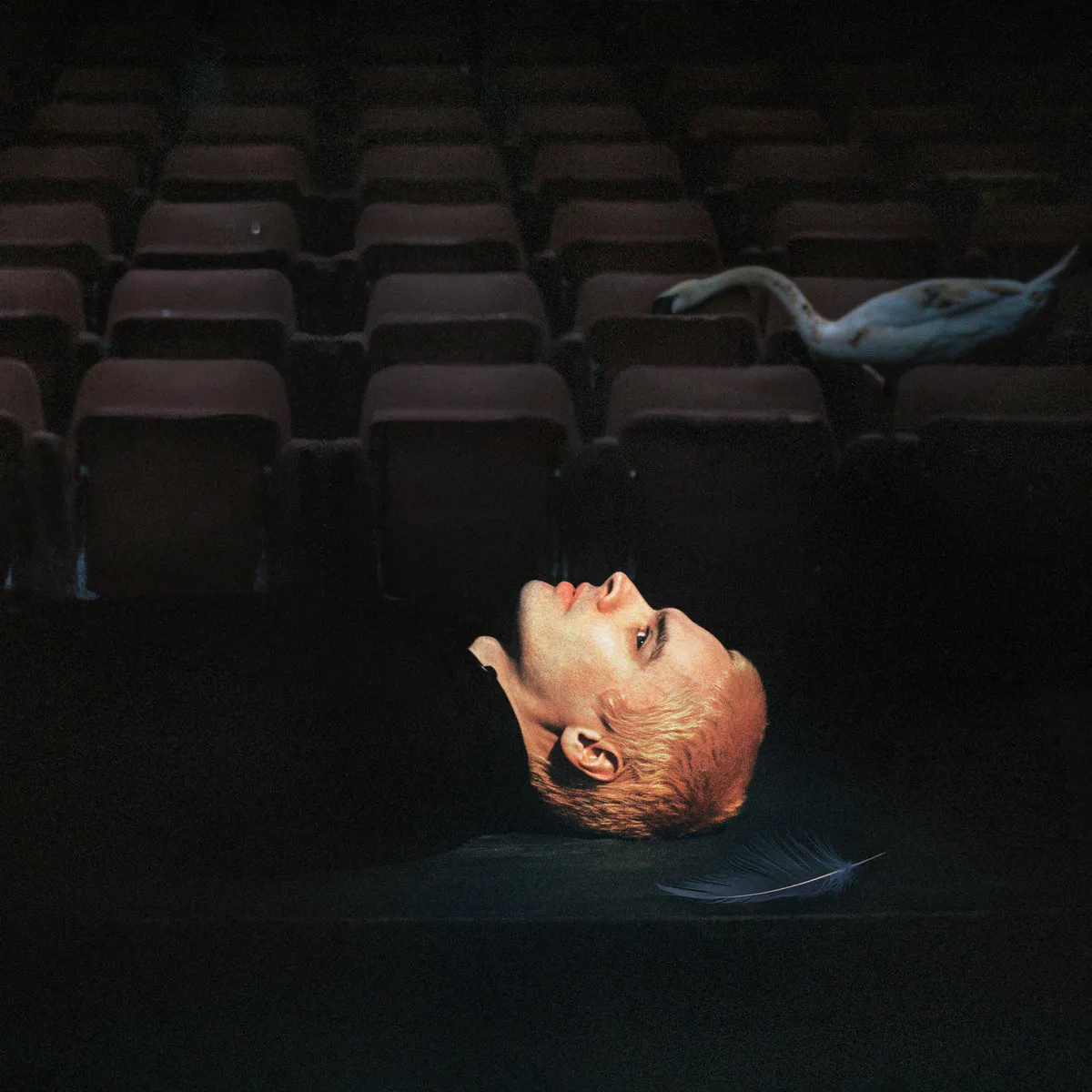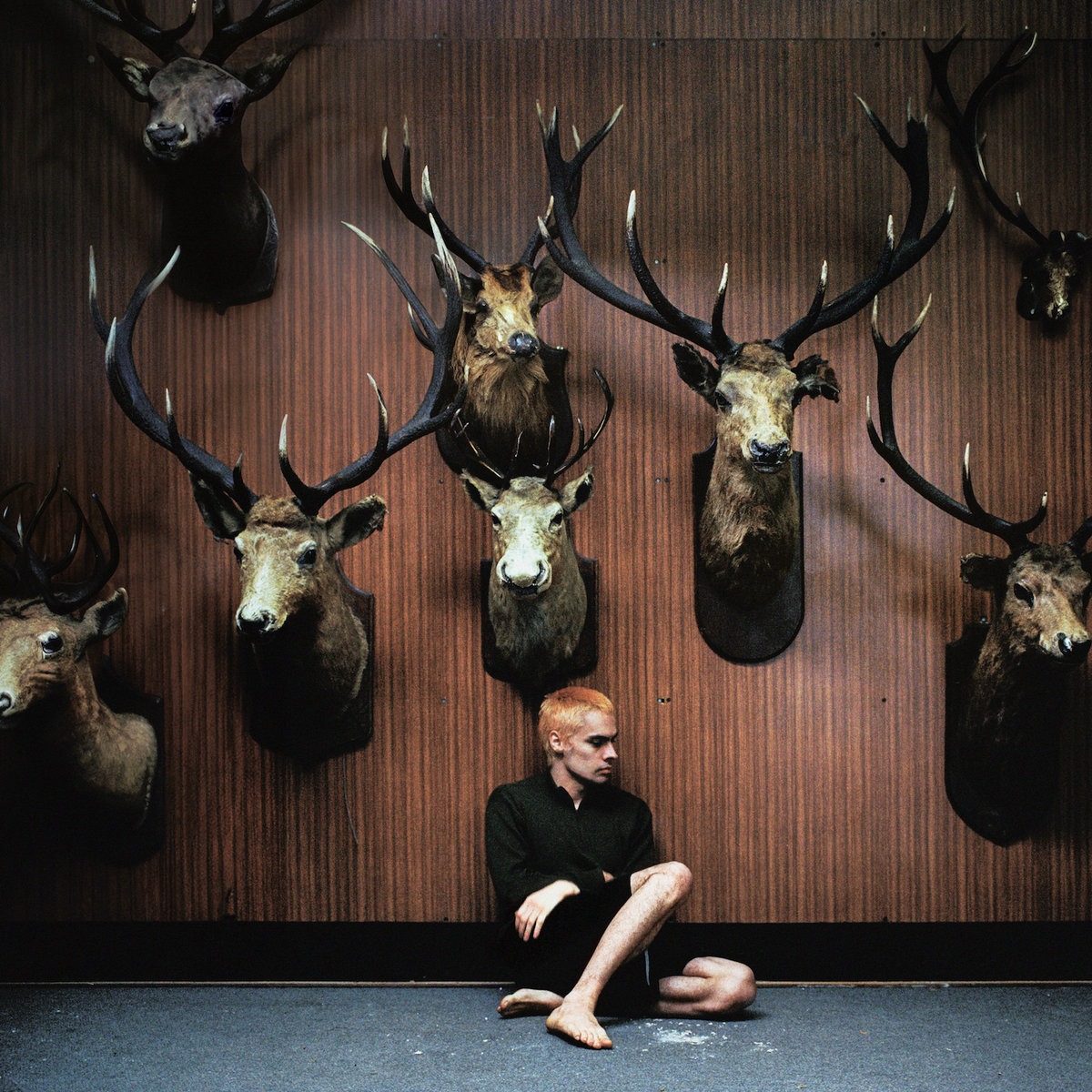EM GUIDE: Re-Pitched Feelings and Avant-Garde Reggaeton – Review of Sega Bodega’s ‘Dennis’

The sound of Sega Bodega was always defined by intercrossing and juxtaposing various musical genres. We could find UK bass and trip-hop influences in his music so far, but we can also label them as simply pop. Surely, this is not the kind of mainstream pop one could catch on the main stage of Sziget Festival (I wish it was); it is more akin to what PC Music or NUXXE represents. That is: music with wild and raw ideas, heavily-processed vocals with loads of effects. The NUXXE collective got really silent though in the past few years, its members (Shygirl, Oklou, Coucou Chloe and Sega Bodega) all focus on their own, solo acts, or engage in collaborations occasionally. To uncover the whys and hows for that would be subject to a different article, so let’s just continue focusing on Sega Bodega.
Bodega is on the forefront of reshaping pop music for quite some time now: apart from his solo outlets he already worked with FKA Twigs, Shygirl, Sophie-Ellis Bextor, Caroline Polachek and Björk. However, he has not yet worked on full-length albums for artists (as Danny L Harle did for Dua Lipa for example) as far as I know, but let’s hope that all is not lost that is delayed.
On his third album, Bodega keeps his vocal-oriented songwriting technique that is so prevalent in pop – the nouveauté he brings in is the restructuring of the songs’ arrangement, implementing further genres and musical traditions (house, acid, reggaeton), and moving atmospheric soundscapes to the forefront.

Did you know that in March 1951 not one, but two comic strips appeared in the newspapers as Dennis the Menace, on the same day, totally unrelated from one another? One was published in the UK, and the other in the U.S. They were created by two different artists, who never talked to each other. The main characters look different, but both comic strips are about a boy named Dennis, and both kids have a dog. Bodega was fascinated by coincidences, or events that seem like coincidences like this while writing the album, thus referring to the motif of the collective unconscious; the common, comprehensive, memories that connects people; and therefore, folk and biblical themes. We can find numerous mentions of animals, whether it is the swan on the album artwork, mentions in song titles (Deer Teeth), or lyrics (‘What happens in the dark when all the birds stop speaking’).
Following the minatory intro track ‘Comma Dennis’ accompanied by whispers and wind instruments, I find the opening tunes of ‘Adulter8’ impeccable with its driving force of chirping, Nintendo-like, 8bit sounds that may remind us some old musical doorbells. The track then swiftly transcends into layers of buzzing synth sounds, and to the familiar, yet restrained vocal units. What captures my attention in this track is the main motif carried by the synth tracks stays the same the whole time, it just keeps repeating and repeating. The variations of the loops address only octave-shifts and a few tonal changes, hence Bodega attempts to bring in more club music-like elements to the track. At this point, it remains an attempt, since the 3-minute running time of the track is not enough to have a decent dive in these patterns.
Besides implementing several genres, the use of abrupt changes and cuts is also quite prevalent on ‘Dennis’. By the time I would realize the drifting, raucous pulse of the synths in ‘Elk Skin’, a fine, soothing vocal suddenly takes over in the track’s 52nd second with an acoustic guitar accompaniment. This is followed by another beat-pattern, which is the dembow riddim (hereafter: dembow), which is the airy, 3+3+2 pulsation of Latin-America, dominant in reggaeton, and prevalent in ‘Dennis’ too.
One of the best moments and most catchy tracks of the album is ‘Kepko’: bursting with a vocal track that could very well pass as a rapping, surrounded by high-pitched, tiny hi-hats, and with bumping, rumbling synths. This highlight track, along with the music video (seizure warning) presents an electropop song focusing on the rapid and volatile nature of urban night life, along with its momentary and gloomy nature. It’s impossible to comprehend, what we see on the sped-up video, the overexposed faces become indistinguishable; the only images that suggest a sense of stability are ones appearing in the end of the video, as Bodega looks at us from the seats of the album artwork’s empty auditorium.
The track ‘Dirt’ is on the verge of kitsch with its Scooter-like trance-stabs, but since there is no noticeable sign of irony or humor, I find it more of a bizarre track, rather than a good one. As I keep listening and noticing the appearing generic kicks and hihats specific to house music, I can not help but wait for the next track.
As a broken, lynchian Elephant-man comes ‘Set Me Free, I’m an Animal’, which a sensitive, tender, moving ballad with soft vocals. The song is centered heavily on an acoustic guitar and Bodega’s captivating vocals, and the break at 1:33 only makes the whole impression even more raw and intimate. This is the least electronic song from the album with the least number of instruments, yet this is exactly what makes it so powerful. Bodega is a well-known professional when it comes to minimal approaches of songwriting. As an example, take a look at the Reestablishing Connection series he did during the COVID-19 quarantine times, where he made split-screen duets with other artists, with little to none instrumental tracks, using only autotuned vocals with effect chains and barely noticeable background synths.
Besides being a terrific artist and producer, Sega Bodega managed to stay a down-to-earth, guy next door kind of creator, who puts out 1-hour production breakdown videos on his tracks, and sometimes shares stories on his socials like ‘Any vocal effects? Send me something.’ The album benefits from this type of openness and experimental nature, so I can appreciate the themes and ideas of the album even more, both as a listener and a producer. This observation very much applies to the song ‘Deer Teeth’, where Bodega processes his own vocals in a myriad of ways, while at the same time, manages to create an absolutely coherent and melancholic ballad.

The aforementioned dembow beat and house-infused rhythms both appear in the angelic choir-filled ‘True’. The song gives the impression of a continuous flow, which results from both the changes of beat-patterns, and the modulation between keys. While all this may sound a bit too crowded for a song, and we may assume that this is more than enough to make it a dynamic song, in reality it is a bit uneventful.
I don’t want to sound too much of a dembow-hater, but I believe it really gets out of hand, dominating again an entire track (‘Humiliation Doesn’t Leave a Mark’), while the break at 1:35 does not lead anywhere either. Few bits of ‘Tears & Sighs’ sounds so familiar to certain tunes of ‘Deer Teeth’, but apart from that, it leaves the listener with hardly any memorable moments. As the final track, ‘Coma Salv’ arrivies with rather conventional, ambient melodies, providing a calming, soothing, and at the same time, melancholic final touch. The initial, pointy and sharp synth melody becomes blunter, the reverberation becomes denser, and the overall effect takes the listener to a dismal, Twin Peaks-like texture, resulting in a stable, regular and effective finale.
All in all, Dennis does not deliver the electropop vibe that was so prevalent on Sega Bodega’s debut Salvadore, there are no striking hits such as ‘Salv goes to Hollywood’, or ‘U Got The Fever.’ Furthermore, we fail to find songs following a regular song-structure, like ‘Angel On My Shoulder’ from Bodega’s sophomore Romeo, and apart from the backing vocals, there are no collab songs on this album like the ones we found on Romeo with Arca or Charlotte Gainsbourg. What we see in Dennis is the juxtaposition, collage and play with different genres (dembow, acid, house), along with the rather intimate, inward mood of the quarantine collabs. It is clear, that Bodega moved on to a fresh new direction, where the minimalist episodes and hyper-speed rushes are the best moments of the album. This is where the songwriting skills of Bodega shine the most, this is where either a simple and slow play on a guitar can be put in the spotlight; or a fading, soft singing; not to mention the circulating animal-like cries in the background. Condensing two or more genres into 3 or 4 minute tracks however can often lead to rushing, hardly comprehensible results; especially since the genres he brings in are mostly loop-based club music genres, that require longer playtime, and more careful variations. Dennis disregards all this, which could result in something excellent; this time however, I believe our minds failed to meet in the collective unconscious realm.

This article is brought to you by MMN as part of the EM GUIDE project – an initiative dedicated to empowering independent music magazines and strengthen the underground music scene in Europe. Read more about the project at emgui.de
Funded by the European Union. Views and opinions expressed are however those of the author(s) only and do not necessarily reflect those of the European Union or the European Education and Culture Executive Agency (EACEA). Neither the European Union nor EACEA can be held responsible for them.